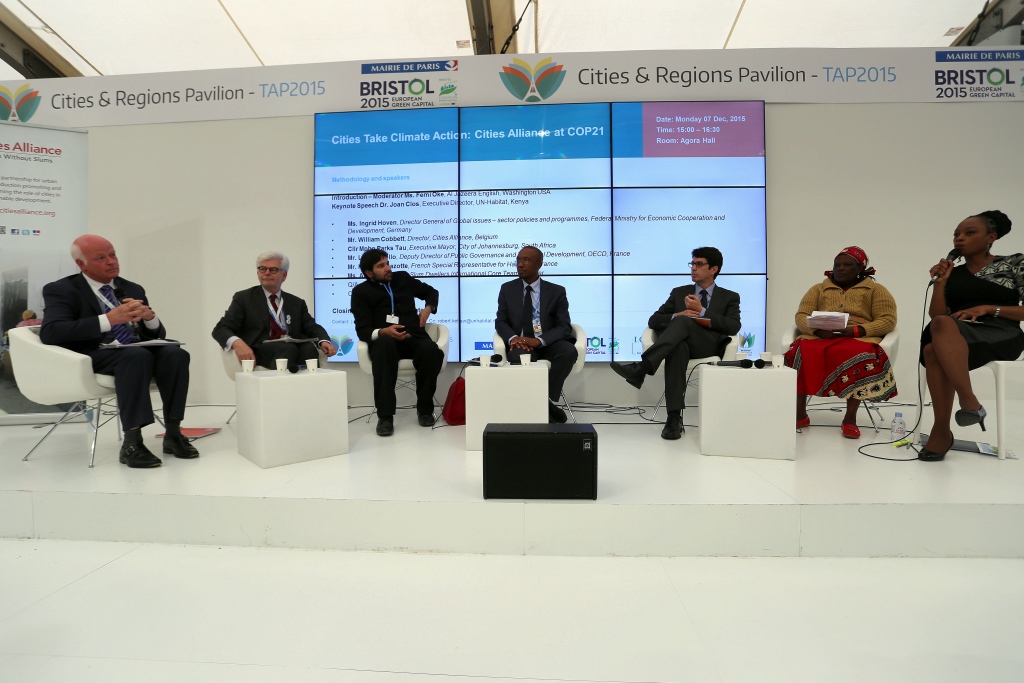Cities lead on climate with nature’s help
By Laura Huffman, Texas Regional Director, The Nature Conservancy
Cities get things done at the right scale: the human scale.
They have the pace and vigor to turn momentum into action, connecting locally to move the needle globally on a host of issues. When the U.S. government withdrew from the Paris Agreement, the response from cities was swift and decisive. Less than a year later, 405 U.S. Climate Mayors and over 2,700 local leaders with America’s Pledge have committed to uphold Paris Agreement goals. At the international level, the Global Covenant of Mayors stands 9,098 cities and over 120 countries strong, representing a coalition of local leaders dedicated to lowering carbon emissions and increasing climate resilience. And at ICLEI World Congress 2018 in Montreal, local and regional governments will convene to share the latest and greatest on how these efforts are advancing.
Cities comprise about two percent of global land area yet consume 78 percent of its energy and produce over 60 percent of its carbon emissions. It’s jarring what a relatively small urban footprint is doing to the planet in service of itself. But it’s equally inspiring to see how cities are innovating and uniting to course correct. In many instances, they’re finding that the most important tool has been in their toolbelt all along: nature.
If we lean into the local movement, we have an opportunity to play through and accelerate real change. Aside from carbon emissions, there are plenty more canaries in the climate coal mine—flooding, drought, urban heat, air pollution and more. Around the world, the problems look similar city to city, enabling us to share knowledge and best practices.
Here’s a closer look at three cities leading the charge on air, heat and water:
- Dallas, Texas: Dallas is third fastest-growing heat island in the nation and suffers from poor air quality and ozone pollution. These challenges impact larger public health and equity issues. The city sees higher-than-average rates of childhood asthma, and respiratory issues are a leading cause of absenteeism among its students. In the U.S., black children are twice as likely as white children to have asthma, and with greater severity. The city is turning to nature for help. Mike Rawlings has stepped up to bat as a Climate Mayor, and the City of Dallas, the local school district and community nonprofits are working together on large-scale tree planting initiatives that clean and cool city air and enhance green space while studying the impact of natural interventions on asthma-related absenteeism and other public health indicators.
- Melbourne, Australia: Melbourne frequently ranks among the world’s most livable cities, but its urban sprawl brings forth the usual suspects of pollution, water scarcity, heat and lack of green space. The solution? Connect people, then connect them to nature. As part of the 100 Resilient Cities effort, Resilient Melbourne; the Victorian Government; 32 local governments and developers, planners and communities are convening around an Urban Forest Strategy to green up the growing city. This means maintaining and restoring not only trees, but also parks, gardens, river and creek corridors and wetlands to address things like urban heat and storm water runoff while expanding opportunities for physical activity and improving mental health.
- São Paulo, Brazil: In the seventh-largest metropolitan region in the world, water supply is being taxed to its limit as forests are degraded by farming, ranching and logging; rivers and dams experience erosion and sedimentation and the changing climate exacerbates drought. A water crisis in 2013 saw the volume of water stored in São Paulo’s major water system dip to less than 10 percent of its capacity. In response, the Sao Paulo Water Fund conservation plan brought together local government, corporate and community leaders to protect water by protecting the land thatsits atop it. Estimates indicate that restoring 35,000 acres of degraded land in São Paulo’s watersheds could reduce sedimentation by 50 percent, saving $2.5 million per year.
These are just three of thousands of examples where cities are doing good work locally to drive change globally. Investing in natural solutions reaps big returns, and the benefits keep stacking up. Cities have the power to reshape our world and build it better for future generations. So, let’s roll up our sleeves, dig in and get creative—the payoff will be exponential.
—
The contents of this article reflect the personal opinions and interpretations of the author and do not necessarily represent the views of ICLEI – Local Governments for Sustainability.





